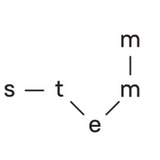Plastic to combat pollution.
Biodegradable plastics are better for the environment, but their rapid degradation means they can’t be recycled. Researchers from the University of Canterbury have developed a method to convert the plastics to a foam that can be reused for insulation or flotation devices.
Their method is described in the journal Physics of Fluids: https://aip.scitation.org/doi/10.1063/5.0050649
#sciencenews #environment #chemistry
Biodegradable plastics are better for the environment, but their rapid degradation means they can’t be recycled. Researchers from the University of Canterbury have developed a method to convert the plastics to a foam that can be reused for insulation or flotation devices.
Their method is described in the journal Physics of Fluids: https://aip.scitation.org/doi/10.1063/5.0050649
#sciencenews #environment #chemistry
AIP Publishing
Recycling and rheology of poly(lactic acid) (PLA) to make foams using supercritical fluid
Biodegradable plastics are thought to be the possible directions in managing plastic pollutions. Unfortunately, they are not recycled in most countries since they are designed to decompose even tho...
Recycling electric vehicle batteries.
University of Leicester researchers have developed an ultrasonic delamination technique to controllably separate the different metals used in lithium-ion batteries, improving the yield and purity of the recovered materials.
Their analysis is detailed in Green Chemistry: http://dx.doi.org/10.1039/D1GC01623G
#sciencenews #chemistry #environment
University of Leicester researchers have developed an ultrasonic delamination technique to controllably separate the different metals used in lithium-ion batteries, improving the yield and purity of the recovered materials.
Their analysis is detailed in Green Chemistry: http://dx.doi.org/10.1039/D1GC01623G
#sciencenews #chemistry #environment
pubs.rsc.org
Lithium ion battery recycling using high-intensity ultrasonication
Decarbonisation of energy will rely heavily, at least initially, on the use of lithium ion batteries for automotive transportation. The projected volumes of batteries necessitate the development of fast and efficient recycling protocols. Current methods are…
Synthesising cancer treatments.
Rice University chemists have developed a simplified method for the facile synthesis of halichondrin B and related compounds. This important molecule has potent anti-tumour properties of great interest to medical research.
Their insights are published in the Journal of the American Chemical Society: http://dx.doi.org/10.1021/jacs.1c05270
#sciencenews #chemistry #cancer
Rice University chemists have developed a simplified method for the facile synthesis of halichondrin B and related compounds. This important molecule has potent anti-tumour properties of great interest to medical research.
Their insights are published in the Journal of the American Chemical Society: http://dx.doi.org/10.1021/jacs.1c05270
#sciencenews #chemistry #cancer
ACS Publications
A Reverse Approach to the Total Synthesis of Halichondrin B
A new strategy is described for the total synthesis of halichondrin B featuring reversal of the sequential construction of a number of its cyclic ethers from the classical approach by instead forming C–O bonds first followed by C–C bond formation. Employing…
3D printing with functional gels.
A study from Dartmouth College describes a process using heat to change the arrangement of molecular rings on a chemical chain creates 3D-printable gels with a variety of functional properties. Printing objects with different mechanical strengths using a single ink could replace the costly and time-consuming use of multiple inks for printing.
The results are published in the journal Chem: http://dx.doi.org/10.1016/j.chempr.2021.06.004
#sciencenews #chemistry #3dprinting #engineering
A study from Dartmouth College describes a process using heat to change the arrangement of molecular rings on a chemical chain creates 3D-printable gels with a variety of functional properties. Printing objects with different mechanical strengths using a single ink could replace the costly and time-consuming use of multiple inks for printing.
The results are published in the journal Chem: http://dx.doi.org/10.1016/j.chempr.2021.06.004
#sciencenews #chemistry #3dprinting #engineering
Sciencedirect
Kinetic trapping of 3D-printable cyclodextrin-based poly(pseudo)rotaxane networks
Synthetically trapping kinetically varied (super)structures of molecular assemblies and amplifying them to the macroscale is a promising, yet challeng…
Long-life lithium batteries.
Researchers at the Pacific Northwest National Laboratory have increased the lifetime of lithium-metal electric vehicle batteries to a record level by using microscale structured anodes. This is an important step towards the goal of lighter, cheaper, and longer-lasting electric vehicle batteries.
Their latest results are published in Nature Energy: http://dx.doi.org/10.1038/s41560-021-00852-3
#sciencenews #physics #chemistry #energy
Researchers at the Pacific Northwest National Laboratory have increased the lifetime of lithium-metal electric vehicle batteries to a record level by using microscale structured anodes. This is an important step towards the goal of lighter, cheaper, and longer-lasting electric vehicle batteries.
Their latest results are published in Nature Energy: http://dx.doi.org/10.1038/s41560-021-00852-3
#sciencenews #physics #chemistry #energy
Nature
Balancing interfacial reactions to achieve long cycle life in high-energy lithium metal batteries
Nature Energy - The development of Li metal batteries requires understanding of cell-level electrochemical processes. Here the authors investigate the interplay between electrode thickness,...
Breaking down carbon dioxide.
A two-dimensional, five-metal alloy developed at Washington University has been shown to be an excellent catalyst for the reduction of carbon dioxide to carbon monoxide. The material could be used to help combat the rising levels of greenhouse gases in the atmosphere.
The work has recently been published in Advanced Materials: http://dx.doi.org/10.1002/adma.202100347
#sciencenews #chemistry
A two-dimensional, five-metal alloy developed at Washington University has been shown to be an excellent catalyst for the reduction of carbon dioxide to carbon monoxide. The material could be used to help combat the rising levels of greenhouse gases in the atmosphere.
The work has recently been published in Advanced Materials: http://dx.doi.org/10.1002/adma.202100347
#sciencenews #chemistry
Wiley Online Library
2D High‐Entropy Transition Metal Dichalcogenides for Carbon Dioxide Electrocatalysis
High-entropy transition metal dichalcogenide alloys containing 4 or 5 transition metals are synthesized based on first-principles stability predictions. The 5-component alloy (MoWVNbTa)S2 is shown to...
